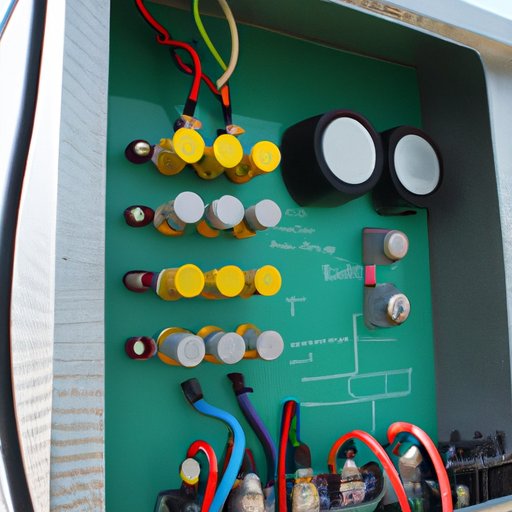
Introduction
Understanding how to calculate amps is a critical skill for anyone who works with electrical systems or appliances. Electricians, engineers, and technicians all need to be able to measure and calculate amps accurately. But even if you’re not working in a professional capacity, understanding amps is important for your safety and the proper functioning of electrical devices in your home.
In this article, we’ll provide a step-by-step guide on how to calculate amps, explain the importance of understanding amps, common mistakes to avoid, and how amps impact electrical devices. By the end of this article, you’ll have a solid understanding of amps and how to work with them safely and efficiently.
A Step-by-Step Guide on How to Calculate Amps
Before diving into the equations and calculations, it’s important to understand what we mean by “amps.” Amps (or amperes) are the units used to measure the flow of electrical current. The higher the amps, the more electricity is flowing. Amps are measured using an ammeter.
To calculate amps, we need to use Ohm’s Law. Ohm’s Law is an equation that helps us understand the relationship between current, voltage, and resistance. The formula is:
Amps = Volts / Ohms
To use this formula, you’ll need to know the voltage of the electrical system, as well as the resistance of the circuit. The resistance can be calculated using a multimeter or an ohmmeter.
Let’s walk through an example. Say you have a circuit with a voltage of 120V and a resistance of 10 ohms. Using Ohm’s Law, we can calculate the amps:
Amps = 120V / 10 ohms
Amps = 12 amps
So the circuit is carrying 12 amps of current. It’s important to note that this equation assumes a linear relationship between voltage, resistance, and current. In real-life scenarios, circuits may not behave linearly, and other factors may come into play.
Double-checking your calculations is crucial to avoid mistakes that could be dangerous or costly. Make sure to use the correct units and account for all devices on the circuit.
The Importance of Understanding Amps
So why is it important to understand amps? For one, understanding amps can help you ensure that your electrical devices are working correctly. Devices that are underpowered or overloaded may not perform as intended, and their lifespan may be shortened.
Additionally, understanding amps is critical for safety. Overloading a circuit can create a fire hazard, and using devices with the incorrect amperage can result in electrical shocks or other hazards.
Common Mistakes to Avoid When Calculating Amps
To ensure accurate calculations, it’s important to avoid common mistakes that people make when calculating amps. One common mistake is forgetting to convert units. For example, if you’re working with kilovolts instead of volts, you’ll need to do some extra conversions to get the correct answer.
Another common mistake is not accounting for all the devices on a circuit. Make sure to add up the amperages of all devices on a circuit to get an accurate total.
To avoid these mistakes, double-check your calculations and make sure you’re using the correct units and accounting for all devices on a circuit.
How Amps Affect Electrical Devices
Amps can have a significant impact on the performance and lifespan of electrical devices. Devices that are not getting enough amps may not work as intended, while devices that are receiving too many amps may overheat or fail altogether.
To ensure optimal performance and lifespan of your electrical devices, it’s crucial to match the correct amperage to each device. Always check the device’s specifications to find out what amperage it requires, and make sure to use the correct fuses or breakers to prevent overloading circuits.
Amps and Safety
Understanding amps is also critical for safety. Electrical shocks can occur when too many amps are flowing through a device or when the device is improperly grounded. Overloading a circuit can create a fire hazard and put you and your property at risk.
To use electrical devices safely, make sure to read and follow the manufacturer’s instructions carefully. Avoid using devices in wet or damp environments and keep them away from flammable materials. Never touch electrical devices with wet hands, and always unplug devices before attempting to repair or clean them.
Conclusion
Understanding how to calculate amps and how amps impact electrical devices is crucial for safety and the proper functioning of your electrical systems and appliances. To calculate amps, use Ohm’s Law and double-check your calculations to avoid mistakes. Always match the correct amperage to each device and use electrical devices safely to prevent shocks and other hazards. With these tips, you’ll be able to work with amps safely and efficiently.





